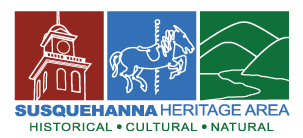For millenia prior to non-Native settlement, Native Americans lived in and traveled through this region, leaving behind artifacts as evidence of their presence. Nomadic bands of Paleo-Native Americans roved the region during a finite period ca. 8000 BC. After a hiatus of several millenia, humans returned to the region ca. 2000 BC and sustained themselves with hunting and gathering. The most recent Native American civilization was that of the Haudenosaunee, also known as the Iroquois Confederacy, a federated group of nations whose peoples formed permanent groups of villages along the Chenango and Susquehanna and engaged in agriculture. Their concept of land ownership and use of resources were highly attuned to the natural world and completely foreign to European settlers. Europeans initially came as missionaries, followed closely by traders, who continued to inhabit the region until well past the end of the American Revolution. As contact with adjacent European settlers increased and the region plunged into war, sharp conflicts arose over land ownership and ultimately led to bloodshed on both sides.
- Subtheme 2A: Remains of a Lost Civilization: Archaic to Woodland
- Subtheme 2B: Preserving a Stronghold: The Iroquois Confederacy
- Subtheme 2C: Joseph Brant and the Revolution
- Subtheme 2D: Post-Revolutionary Frontier
Related Interpretive Sites and Projects
TO BE PROVIDED
